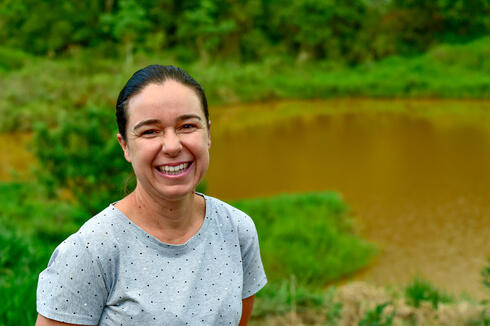Healthy forests are critical for wildlife and ecosystems, but they also provide services to people. For farmers especially, these services can help keep land productive and resilient in the face of uncertain conditions. A forest can act as a buffer from the elements, recharging groundwater reserves, preventing soil erosion, shielding crops from extreme winds, and mitigating flooding. Forests also help preserve water quality by filtering nutrient runoff from fertilizers.
Fontana decided to maximize these benefits by restoring additional forest habitat on her property, connecting the span of natural forest on her land to another forest fragment on a neighboring property. As a participant in the Raizes do Mogi Guaçu project—a partnership between International Paper and WWF—Fontana was able to begin the restoration process in late 2019. Copaíba, a local forest restoration organization, has worked with her as part of the Raizes project to prepare the land, plant seedlings, and monitor the adolescent forest to make sure it continues to thrive.
Fontana says that farmers, inherently connected to the land, understand better than anyone how important conservation is. But with a thin profit margin and an overwhelming workload, investing the money and time to restore forest land without help is impractical, if not impossible.
“Most of the time, we are trying to save, trying to manage our crops and our business,” she says. “And sometimes reforestation ends up being put off till tomorrow. So, when we have partners like Copaíba, like WWF, and International Paper, who come to help and make this happen, for us it is essential.”
The parcel of land that Fontana is restoring is small, only a couple acres, but these small patches of restored forests will build up to something impressive. The original goal of the Raizes project was to restore nearly 250 acres in the Mogi Guaçu region. Thanks to additional investment from HP, that target has doubled. And this project is part of something even larger—The Atlantic Forest Pact, a coalition of more than 280 member organizations working to restore 37 million acres. “If everyone can do a little bit,” Fontana says, “there will be a result in the future.”
For Fontana, that result is deeply personal: a thriving business that she will be able to pass on to her daughter. “I think that living in a balance between coffee production and the environment that we live in provides a benefit not only for our family but for all the other people who will enjoy these resources,” she says. “I think this balance is good for the business, good for the family, and good for our soul.”

